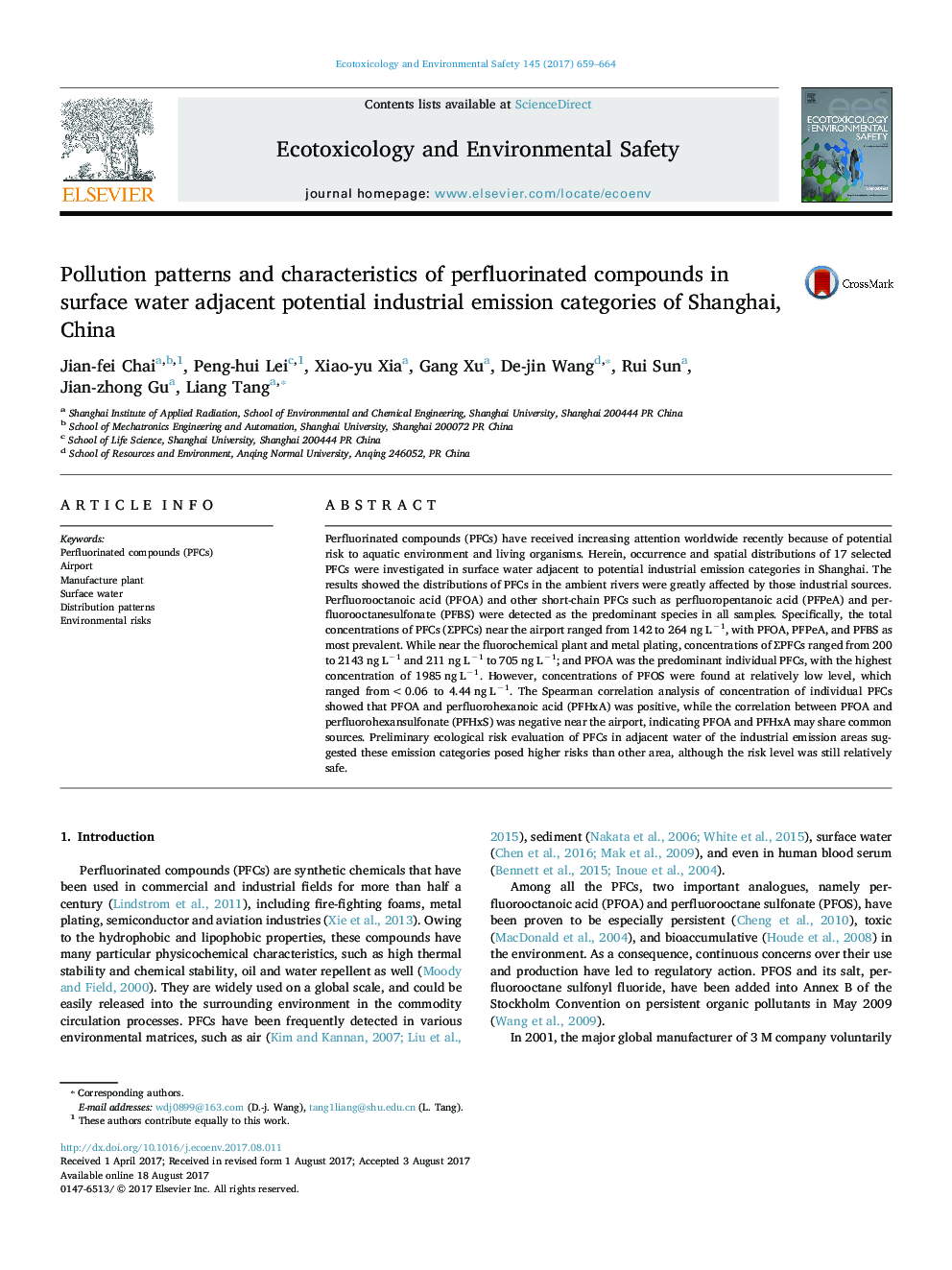| Article ID | Journal | Published Year | Pages | File Type |
|---|---|---|---|---|
| 5747761 | Ecotoxicology and Environmental Safety | 2017 | 6 Pages |
â¢17 PFCs in surface water adjacent to three categories of industrial emission were investigated.â¢The target industrial emissions are potential point sources of PFCs to the surrounding aquatic environment.â¢PFOA was the predominant individual in majorities of the water samples.â¢PFCs from fluorochemical plant and metal plating plant shared similar pollution patterns.
Perfluorinated compounds (PFCs) have received increasing attention worldwide recently because of potential risk to aquatic environment and living organisms. Herein, occurrence and spatial distributions of 17 selected PFCs were investigated in surface water adjacent to potential industrial emission categories in Shanghai. The results showed the distributions of PFCs in the ambient rivers were greatly affected by those industrial sources. Perfluorooctanoic acid (PFOA) and other short-chain PFCs such as perfluoropentanoic acid (PFPeA) and perfluorooctanesulfonate (PFBS) were detected as the predominant species in all samples. Specifically, the total concentrations of PFCs (âPFCs) near the airport ranged from 142 to 264 ng Lâ1, with PFOA, PFPeA, and PFBS as most prevalent. While near the fluorochemical plant and metal plating, concentrations of âPFCs ranged from 200 to 2143 ng Lâ1 and 211 ng Lâ1 to 705 ng Lâ1; and PFOA was the predominant individual PFCs, with the highest concentration of 1985 ng Lâ1. However, concentrations of PFOS were found at relatively low level, which ranged from < 0.06 to 4.44 ng Lâ1. The Spearman correlation analysis of concentration of individual PFCs showed that PFOA and perfluorohexanoic acid (PFHxA) was positive, while the correlation between PFOA and perfluorohexansulfonate (PFHxS) was negative near the airport, indicating PFOA and PFHxA may share common sources. Preliminary ecological risk evaluation of PFCs in adjacent water of the industrial emission areas suggested these emission categories posed higher risks than other area, although the risk level was still relatively safe.
Graphical abstractDownload high-res image (270KB)Download full-size image
